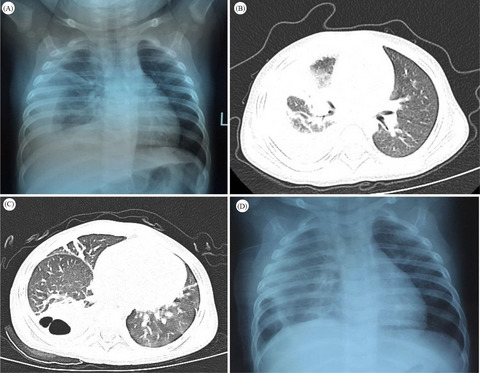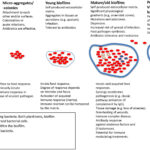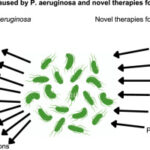Pseudomonas aeruginosa is a major pathogen in healthcare-associated pneumonia (HCAP), hospital-acquired pneumonia (HAP), and ventilator-associated pneumonia (VAP). Its intrinsic resistance mechanisms, adaptive survival strategies, and ability to form biofilms complicate treatment and contribute to high morbidity and mortality rates.

The Challenge of Multidrug-Resistant P. aeruginosa
Multidrug-resistant (MDR) P. aeruginosa strains are increasingly prevalent in intensive care units (ICUs) and among immunocompromised patients. Key resistance mechanisms include:
- Efflux pumps that expel antibiotics from bacterial cells
- Enzymatic degradation of β-lactams via extended-spectrum β-lactamases (ESBLs)
- Porin loss, reducing antibiotic uptake
- Biofilm formation, shielding the pathogen from host defenses and drugs
These features make monotherapy increasingly ineffective and necessitate synergistic approaches.
Understanding Antibiotic Synergy Against P. aeruginosa in Pulmonary Infections
Antibiotic synergy enhances bactericidal activity beyond the additive effects of individual agents. This strategy is vital when treating infections in pulmonary environments where poor drug penetration, biofilm formation, and high bacterial loads prevail.
Mechanisms Driving Synergy
- Membrane disruption facilitating antibiotic entry
- Dual target inhibition within bacterial metabolism
- Biofilm matrix penetration enhancement
- Suppression of resistance development
Synergistic Combinations for P. aeruginosa Pneumonia
β-Lactam and Aminoglycoside Combinations
Meropenem + Amikacin
Meropenem disrupts cell wall synthesis, allowing enhanced intracellular uptake of amikacin, which inhibits protein synthesis. This combination is commonly used in ICU patients with VAP due to P. aeruginosa.
Cefepime + Tobramycin
Effective in both planktonic and biofilm-associated bacteria. This regimen is preferred in patients with preserved renal function due to nephrotoxicity concerns.
β-Lactam and Fluoroquinolone Combinations
Piperacillin-Tazobactam + Ciprofloxacin
Ciprofloxacin provides intracellular and biofilm activity, while piperacillin-tazobactam covers extracellular and β-lactamase-producing strains.
Ceftazidime + Levofloxacin
This combination offers broad-spectrum activity and is recommended when treating severe hospital-acquired pneumonias.
Colistin-Based Combinations
Colistin + Meropenem
Colistin damages the outer membrane, increasing permeability to meropenem. This regimen is often reserved for XDR (extensively drug-resistant) isolates and late-stage ICU patients.
Colistin + Rifampicin
Synergistic activity has been observed in vitro and in animal models. Rifampicin, typically ineffective alone against Gram-negative pathogens, benefits from colistin-induced permeability.
Newer Agents and Combination Strategies
Ceftolozane-Tazobactam + Fosfomycin
Fosfomycin enhances bacterial killing through interference with peptidoglycan synthesis and potentiates ceftolozane’s activity against MDR isolates.
In-Vitro and In-Vivo Evidence Supporting Synergistic Therapy
- Time-kill studies reveal enhanced bactericidal action with combinations, often showing a ≥2-log reduction in bacterial load.
- Checkerboard assays identify fractional inhibitory concentration (FIC) indices confirming synergy.
- Animal models demonstrate improved survival and bacterial clearance with dual regimens compared to monotherapy.
Synergy in Biofilm Models
Biofilm-associated pneumonia is particularly refractory to treatment. Synergistic combinations significantly reduce biofilm biomass and increase penetration:
- Meropenem + colistin reduces biofilm viability by over 80% in murine pneumonia models.
- Ciprofloxacin + amikacin exhibits potent biofilm disruption in endotracheal biofilm models.
Clinical Considerations in Synergistic Therapy for Pneumonia
Patient-Specific Factors
- Renal function: Adjust aminoglycoside and colistin dosing
- Severity of illness: Consider loading doses and extended infusions
- Ventilation status: VAP often requires broader empirical therapy with early de-escalation based on cultures
Empirical Therapy
Combination therapy is frequently initiated empirically in high-risk ICU patients, particularly those with prior colonization or recent antibiotic exposure.
Targeted Therapy
Once pathogen susceptibility is confirmed, the regimen may be streamlined. However, in MDR/XDR cases, continued dual therapy is often necessary.
Duration of Therapy
Treatment typically ranges from 7 to 14 days, with shorter durations showing similar efficacy in uncomplicated cases and longer courses for biofilm-associated or relapsing infections.
Emerging and Experimental Synergistic Strategies
Phage-Antibiotic Synergy (PAS)
- Lytic bacteriophages combined with antibiotics significantly reduce bacterial counts in biofilm-rich environments.
- Early trials in VAP models show enhanced outcomes with colistin + phage therapy.
Inhaled Antibiotic Combinations
- Inhaled colistin or tobramycin with systemic β-lactams ensures higher local concentrations in lung tissue.
- Used especially in mechanically ventilated patients to target airway biofilms directly.
Nanocarrier-Based Delivery Systems
Liposomal formulations enhance drug stability and penetration into infected lung tissue, supporting extended synergy at the site of infection.
Synergistic antibiotic therapy represents a cornerstone in the management of Pseudomonas aeruginosa pneumonia, especially in the context of multidrug resistance and critical care settings. The strategic combination of agents targeting different bacterial mechanisms not only enhances efficacy but also mitigates the risk of therapeutic failure. Ongoing research into novel synergies, phage therapy, and advanced delivery methods promises further improvements in clinical outcomes.

